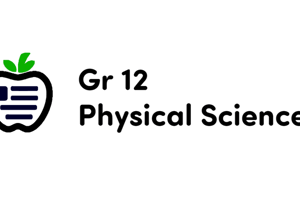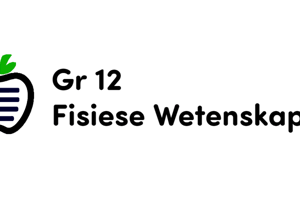Podcast
Questions and Answers
What does the symbol ⃗p represent in physics?
What does the symbol ⃗p represent in physics?
- Acceleration of an object
- Velocity of an object
- Momentum of an object (correct)
- Mass of an object
Which quantity is momentum dependent on?
Which quantity is momentum dependent on?
- Temperature and pressure
- Density and volume
- Mass and velocity (correct)
- Time and distance
What type of quantity is momentum?
What type of quantity is momentum?
- Negative
- Vector (correct)
- Scalar
- Complex
If a truck moves at the same speed as a car but has greater mass, what can be said about their momenta?
If a truck moves at the same speed as a car but has greater mass, what can be said about their momenta?
Which formula can be used to calculate the momentum of an object?
Which formula can be used to calculate the momentum of an object?
In which units is momentum typically measured?
In which units is momentum typically measured?
What does linear momentum refer to?
What does linear momentum refer to?
What is the momentum of a car with a mass of 1000 kg moving east at 20 m/s?
What is the momentum of a car with a mass of 1000 kg moving east at 20 m/s?
If a ball with a mass of 0.5 kg is thrown west at 10 m/s, what is its momentum?
If a ball with a mass of 0.5 kg is thrown west at 10 m/s, what is its momentum?
What is the change in momentum ($\Delta \vec{p}$) defined as?
What is the change in momentum ($\Delta \vec{p}$) defined as?
Which of the following statements about vector diagrams and momentum is correct?
Which of the following statements about vector diagrams and momentum is correct?
What is the impulse ($\vec{J}$) defined as?
What is the impulse ($\vec{J}$) defined as?
According to the law of conservation of momentum, what happens to the total momentum in a closed system with no external net forces?
According to the law of conservation of momentum, what happens to the total momentum in a closed system with no external net forces?
Which of the following is NOT an application of momentum discussed in the text?
Which of the following is NOT an application of momentum discussed in the text?
What is the relationship between impulse and change in momentum?
What is the relationship between impulse and change in momentum?
Which of the following statements about momentum is NOT true?
Which of the following statements about momentum is NOT true?
What is the significance of understanding momentum in physics?
What is the significance of understanding momentum in physics?
What is the momentum of a ball of mass 0.5 kg thrown east at 10 m/s?
What is the momentum of a ball of mass 0.5 kg thrown east at 10 m/s?
Which statement best describes the impulse-momentum theorem?
Which statement best describes the impulse-momentum theorem?
In a vector diagram showing momentum changes, which vector represents the change in momentum?
In a vector diagram showing momentum changes, which vector represents the change in momentum?
Why are vector diagrams useful in illustrating momentum changes?
Why are vector diagrams useful in illustrating momentum changes?
What does the law of conservation of momentum state about the total momentum in a closed system?
What does the law of conservation of momentum state about the total momentum in a closed system?
How is impulse related to a force applied over a time interval in terms of momentum?
How is impulse related to a force applied over a time interval in terms of momentum?
What aspect determines the magnitude and direction of a momentum change in a vector diagram?
What aspect determines the magnitude and direction of a momentum change in a vector diagram?
Which physical quantity is directly proportional to an object's momentum?
Which physical quantity is directly proportional to an object's momentum?
If a truck and a car have equal masses but different velocities, which would have greater momentum?
If a truck and a car have equal masses but different velocities, which would have greater momentum?
What does the impulse-momentum theorem describe about the relationship between force and change in momentum?
What does the impulse-momentum theorem describe about the relationship between force and change in momentum?
If an object's mass is doubled and its velocity remains the same, how does its momentum change?
If an object's mass is doubled and its velocity remains the same, how does its momentum change?
What is the net momentum of two objects with equal masses moving in opposite directions at the same speed?
What is the net momentum of two objects with equal masses moving in opposite directions at the same speed?
If a car of mass 1500 kg is traveling east at 25 m/s and a truck of mass 3000 kg is traveling west at 15 m/s, what is the direction of their net momentum?
If a car of mass 1500 kg is traveling east at 25 m/s and a truck of mass 3000 kg is traveling west at 15 m/s, what is the direction of their net momentum?
If the velocity of an object is tripled while its mass remains constant, how does its momentum change?
If the velocity of an object is tripled while its mass remains constant, how does its momentum change?
If an object's momentum is zero, what can be concluded about its motion?
If an object's momentum is zero, what can be concluded about its motion?
In a perfectly elastic collision between two objects, what happens to the total momentum of the system?
In a perfectly elastic collision between two objects, what happens to the total momentum of the system?
If a baseball of mass 0.145 kg is pitched at a velocity of 40 m/s, what is its approximate momentum?
If a baseball of mass 0.145 kg is pitched at a velocity of 40 m/s, what is its approximate momentum?
If a ball is thrown straight up in the air, what happens to its momentum at the highest point of its trajectory?
If a ball is thrown straight up in the air, what happens to its momentum at the highest point of its trajectory?
Which of the following statements about momentum is true?
Which of the following statements about momentum is true?
In a closed system, if the net external force acting on the system is zero, what can be said about the total momentum of the system?
In a closed system, if the net external force acting on the system is zero, what can be said about the total momentum of the system?
When representing momentum changes using vector diagrams, how is the change in momentum typically illustrated?
When representing momentum changes using vector diagrams, how is the change in momentum typically illustrated?
In a closed system, what does the conservation of momentum principle state about total momentum after an event like a collision?
In a closed system, what does the conservation of momentum principle state about total momentum after an event like a collision?
Which physical concept describes the change in an object's momentum resulting from a force applied over a time interval?
Which physical concept describes the change in an object's momentum resulting from a force applied over a time interval?
What does the law of conservation of momentum predict about the total momentum in a closed system?
What does the law of conservation of momentum predict about the total momentum in a closed system?
In a vector diagram showing momentum changes, which vector would represent the final momentum of an object?
In a vector diagram showing momentum changes, which vector would represent the final momentum of an object?
What is the relationship between force and change in momentum as described by the impulse-momentum theorem?
What is the relationship between force and change in momentum as described by the impulse-momentum theorem?
In understanding vehicle collisions, sports activities, and physical scenarios, what crucial concept plays a significant role?
In understanding vehicle collisions, sports activities, and physical scenarios, what crucial concept plays a significant role?
If two objects have equal masses but are moving in opposite directions at different speeds, which object would have greater momentum?
If two objects have equal masses but are moving in opposite directions at different speeds, which object would have greater momentum?
What aspect determines both the magnitude and direction of a momentum change illustrated on a vector diagram?
What aspect determines both the magnitude and direction of a momentum change illustrated on a vector diagram?
If a ball is thrown west at 10 m/s with a mass of 0.5 kg, what is its approximate change in momentum according to the provided information?
If a ball is thrown west at 10 m/s with a mass of 0.5 kg, what is its approximate change in momentum according to the provided information?
If an object's mass is tripled and its velocity is doubled, what is the change in its momentum?
If an object's mass is tripled and its velocity is doubled, what is the change in its momentum?
In a perfectly inelastic collision between two objects, what happens to their momenta after the collision?
In a perfectly inelastic collision between two objects, what happens to their momenta after the collision?
If a ball of mass $m$ is thrown vertically upward with an initial velocity $v_0$, what is its momentum at the highest point of its trajectory?
If a ball of mass $m$ is thrown vertically upward with an initial velocity $v_0$, what is its momentum at the highest point of its trajectory?
In a closed system, if an external force acts on an object for a certain time interval, what can be said about the change in the system's total momentum?
In a closed system, if an external force acts on an object for a certain time interval, what can be said about the change in the system's total momentum?
If an object of mass $m$ is moving with a velocity $v_1$ and collides with another object of mass $2m$ initially at rest, what is the final velocity of the combined system after a perfectly inelastic collision?
If an object of mass $m$ is moving with a velocity $v_1$ and collides with another object of mass $2m$ initially at rest, what is the final velocity of the combined system after a perfectly inelastic collision?
Two objects of masses $m_1$ and $m_2$ are moving in opposite directions with velocities $v_1$ and $v_2$, respectively. If their momenta are equal in magnitude, what is the ratio of their masses?
Two objects of masses $m_1$ and $m_2$ are moving in opposite directions with velocities $v_1$ and $v_2$, respectively. If their momenta are equal in magnitude, what is the ratio of their masses?
In a perfectly elastic collision between two objects, what can be said about their kinetic energies before and after the collision?
In a perfectly elastic collision between two objects, what can be said about their kinetic energies before and after the collision?
If an object of mass $m$ is moving with a velocity $v$ and experiences a constant force $F$ acting in the opposite direction for a time interval $t$, what is the final velocity of the object?
If an object of mass $m$ is moving with a velocity $v$ and experiences a constant force $F$ acting in the opposite direction for a time interval $t$, what is the final velocity of the object?
In a two-dimensional collision between two objects, what can be said about the conservation of momentum in the x and y directions?
In a two-dimensional collision between two objects, what can be said about the conservation of momentum in the x and y directions?
If an object of mass $m$ is moving with a velocity $v$ and collides with a stationary object of mass $2m$, what is the final velocity of the combined system after a perfectly elastic collision?
If an object of mass $m$ is moving with a velocity $v$ and collides with a stationary object of mass $2m$, what is the final velocity of the combined system after a perfectly elastic collision?




